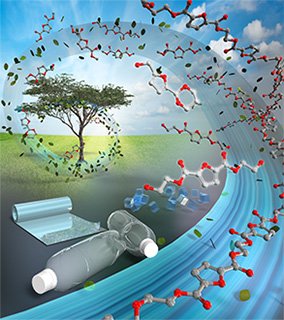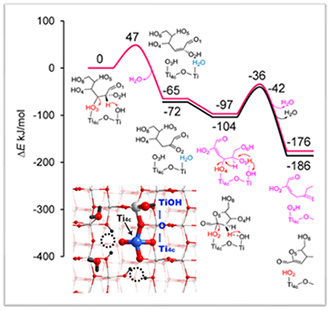Catalytic Reaction Research Division
Heterogeneous catalysis for smart utilization of renewable carbon resources to develop sustainable societ
![]() Kiyotaka NAKAJIMA@
Kiyotaka NAKAJIMA@![]() Satoshi SUGANUMA@
Satoshi SUGANUMA@![]() Ryota OSUGA
Ryota OSUGA
Building a sustainable society requires to postulate a different paradigm using renewable carbon resources such as non-edible biomass and CO2 to produce fuels and platform chemicals. Main tasks of this division are to design catalytic reactions using new heterogeneous catalysts and lignocellulose-derived hydrocarbons, in which scalable production of platform chemicals can be accomplished with minimizing environmental loads as well as energy consumption in work-up processes. Examples include the conversion of biomass-derived glucose to a variety of building blocks that can be used for the synthesis of biomass-based highly functional plastics. The concept for the design of catalytic reactions is based on 1) the fabrication of catalytically active sites on solid surfaces at the molecular level and 2) protecting strategies controlling reactivity of oxygenated functional groups in the substates, thus suppressing by-product formation. We deeply interpret structure-activity relationship of the target reactions at the molecular level through advanced spectroscopic techniques that reveal the structure of catalytically active sites and theoretical calculations that predict catalytic reaction dynamics on solid surfaces. We aim at continuously developing novel catalytic reactions that contribute to smart utilization of renewable carbon resources for our future life
 Fig.1 Catalytic routes from biomass-derived hydrocarbons to building blocks for biomass-based functional polymers |
 Fig. 2 Theoretical calculations for presumable reaction dynamics on the dehydration of glucose over Lewis acid-base pairs of TiO2 |
